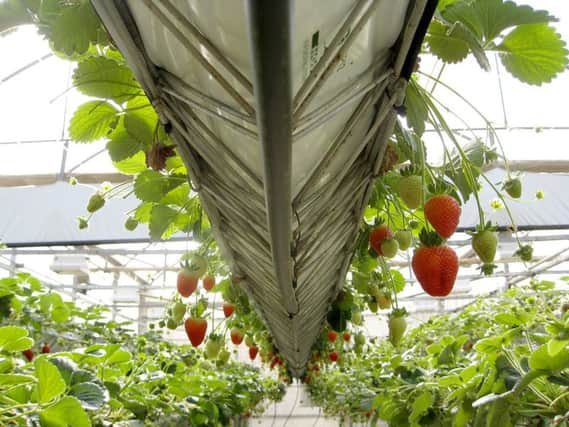BRIAN KIDD: Time to revitalise your strawberries


As a rule I try to get digging and manuring for potatoes, peas and beans done before Christmas, but events and work such as hedge-cutting upset this plan.
I find a lot of these jobs take far longer these days. Never mind, it’s better to wait for good weather and lighter evenings rather than trying to dig in appalling conditions.
Advertisement
Hide AdAdvertisement
Hide AdOne thing I must do, however, is sort out the strawberry bed. This was replanted at this time last year and the crop was excellent.
The largest fruits come on the newest plants. The best crop is on two-year-old plants, but if left any longer the fruits will be smaller and fewer. It pays to refresh the bed with new plants every third year.
Runners from your own plants are suitable if the parent plants have produced good quality fruits. Luckily I pegged down runners into three-inch diameter pots sunk into the ground and with a bit of luck will extricate the pots from the mass of old foliage and replant in another area when the weather and time allows.
I grow strawberries in pots in my allotment greenhouse. I will use 30 runners to produce strawberries in there and these will start fruiting next May, about three weeks before the outdoor ones are ready to pick.
Advertisement
Hide AdAdvertisement
Hide AdThe plants in the little pots need to be cleaned up. All the foliage and dead stems should be removed and soil washed off the roots. This ensures root aphids are destroyed.
Now pot the plants into five-inch diameter pots with John Innes No3 compost and keep them ouside until January 2. Then put them in the greenhouse without any heat. The reason for keeping them outside is to ensure they are ‘wintered’. The hormones responsible for fruits become active if the plants are left long enough outdoors.
After three or four weeks new foliage will appear and in late March flowers will bloom.
Each flower has to be hand-pollinated with an artist’s brush; just a tickle from bloom to bloom and fruits will form. Hand pollination is essential because there are no bees in the greenhouse.
Back to the strawberry bed.
Advertisement
Hide AdAdvertisement
Hide AdCut off old leaves and stems, remove weeds and fork through the rows. At the end of February feed with blood, fish and bone – four ounces per yard run. Work into the soil with an onion hoe or hand fork. Have straw ready to put between the rows when flowers appear, not before because if it’s cold. The straw stops the sun warming the soil.
Many of you live in flats. So put eight in a growing bag on a sunny path alongside a wall or plant five in a large hanging basket. If you choose baskets there will be no slugs or woodlice. Strawberries produce excellent crops in baskets.
THIS WEEK’S TOP TIP
Keep a gardening diary. No need to buy a new one, just use an old one. Make important notes such as when the first snowdrops appeared and when the first crocus opened. Also, note when you spray plants to control pests/diseases or when a disease such as potato blight struck. This helps prevent problems next year.